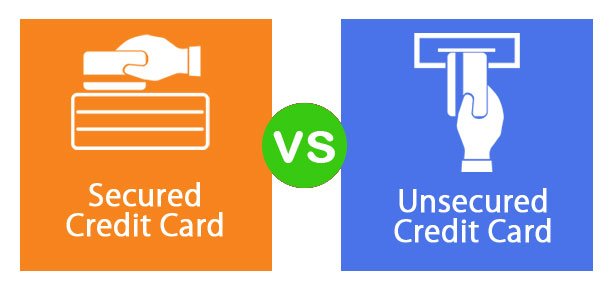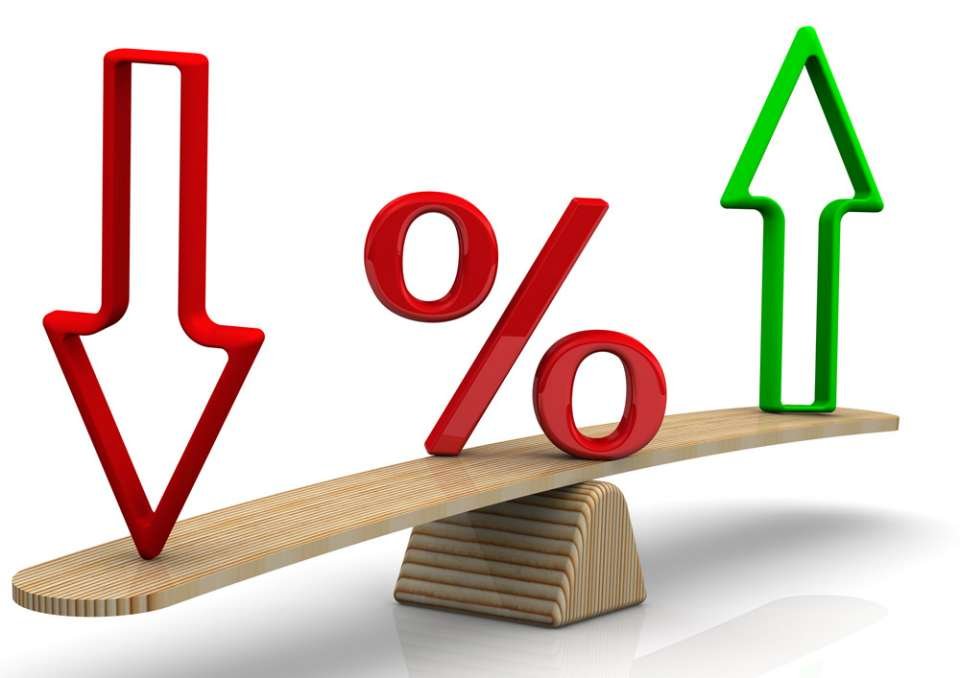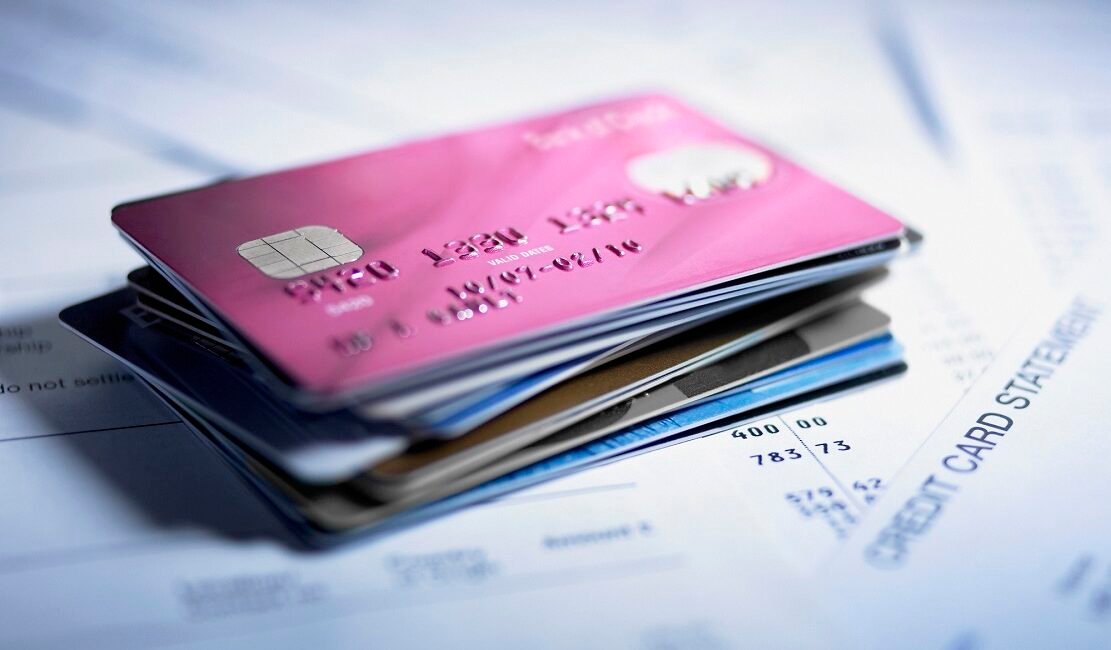Unsecured credit cards for bad credit: Navigating the financial landscape with a poor, less-than-perfect credit score can seem daunting, especially when assessing creditworthiness and considering the drawbacks of card issuers. These financial tools, including account and debit card transactions by card issuers, are essential for rebuilding and enhancing your credit rating and creditworthiness without requiring a security deposit.
With careful selection and responsible use, you have the opportunity to turn your financial situation around, rebuilding credit and improving creditworthiness, even with bad or poor credit. This guide aims to empower you with knowledge on selecting the best unsecured credit cards tailored to meet the needs of individuals with bad credit, using criteria and rankings as indicators of creditworthiness, helping pave the way towards financial recovery and stability.
Understanding Unsecured vs. Secured Credit Cards

Security Deposit
Unsecured credit cards do not require a security deposit. This makes them more accessible if you’re short on cash, have limited credit, poor credit, or are in challenging financial circumstances
Secured cards, however, need a cash deposit upfront. This amount often sets your credit limit.
Credit Limit
Your Business credit limit on an unsecured financial product card depends on your creditworthiness, financial circumstances, and specific criteria rankings. It reflects how trustworthy lenders think you are with money, considering your creditworthiness, financial circumstances, credit type, and bad credit.
For secured cards, a financial product ideal for bad credit within specific credit score ranges, the limit is usually equal to the deposit made. If you put down $500, that’s your limit.
Understanding these differences in financial circumstances is crucial when looking for unsecured credit cards for bad credit, a category of financial product with varying APR. Both types offer paths to rebuild or improve your financial standing but cater to different needs and capabilities, including bad credit, credit score ranges, providing a blueprint, and finding the best card.
- Pros of Unsecured Cards:
- No deposit required.
- Potentially higher credit limits based on trustworthiness.
- Cons of Secured Cards:
- Requires upfront cash.
- Limited by the amount deposited.
Choosing between an unsecured or secured card, which are types of credit, hinges on your financial circumstances, credit score ranges, what you can afford, and how much trust lenders have in you, especially if you have bad credit. Assessing both financial product categories carefully will help guide your decision towards which blueprint or right card suits your current situation best.
Benefits and Drawbacks of Unsecured Credit Cards
No Deposit Required
Unsecured credit cards don’t ask for a deposit. This is great if you’re low on funds. You get a credit line without upfront cash.
However, this convenience comes at a cost. Interest rates on unsecured cards can be high. They often exceed those of secured cards.
Higher Interest Rates
Expect higher interest rates with unsecured credit cards. These rates make carrying a balance expensive.
To manage this, pay off your bill each month. It avoids extra charges from accruing.
Rewards Programs
Many unsecured cards offer rewards programs. Take the QuicksilverOne Cash Rewards Credit Card, for example. It gives back rewards on every purchase.
But there’s a catch. The benefits of this financial product come with fees and higher APRs compared to non-rewards cards, especially for those with bad credit, making it not the best credit type for everyone.
Factors Influencing Approval for unsecured credit cards for bad credit
Credit Score

Your credit score is crucial. It tells lenders about your creditworthiness. A low score might limit your options.
Lenders view higher scores as safer. They often offer better terms to these applicants. Your score falls within specific credit score ranges. Each range has different approval odds.
Income Stability
Having a stable income is key. Lenders want to know you can pay back what you owe, even with bad business credit, by choosing the right credit card type.
They look at your job history and income level. Consistent employment suggests financial stability, increasing your appeal as an applicant with bad credit, credit card, and various credit type considerations.
Debt Levels
Your existing debt matters too. High levels may hurt your chances of getting approved for new credit lines.
Lenders compare your debt to income ratio (DTI). A lower DTI indicates that you manage debts well, making you a more attractive candidate in the best category for an unsecured credit card.
Best Practices for Choosing an Unsecured Credit Card
Compare Fees
When selecting the best unsecured credit cards in the bad credit category, always compare annual fees and interest rates. Some cards, especially those designed for bad credit types, offer lower annual fees which can save you money in the long run. Interest rates on credit cards are also crucial because they affect how much you pay back on what you borrow, impacting the best card choice for those with bad credit.
Look at several offers before deciding. This ensures that you find a credit type card with manageable costs, even with bad credit. Remember, lower credit card fees mean less financial strain on your budget, especially with bad credit repair.
Lower Penalties
Seek out cards with fewer penalties. Late payment fees and over-limit charges on your credit card can add up quickly if you’re not careful with your credit type. Credit cards that offer grace periods or leniency policies are preferable.
By choosing a credit card with minimal penalties, you protect yourself from unexpected expenses. This is especially important when trying to improve your credit card score.
Credit-Building Features
Consider cards that help build your credit. Some unsecured credit cards for individuals with bad credit come equipped with features designed to improve your score over time.
- Free monthly credit score updates.
- Reports to all three major credit bureaus.
These features provide feedback on your progress and encourage responsible use of the credit card.
Steps to Obtain an Unsecured Credit Card with Bad Credit, Considering Creditworthiness, Financial Products, and Financial Circumstances
Check Score
First, know your credit score. This step is crucial. It helps you understand where you stand financially.
Credit scores influence card eligibility. A low score means fewer options. But don’t worry, solutions exist for every score range.
Apply Wisely
Next, focus on cards for bad credit or limited history. These are designed with your situation in mind.
- Pros of these cards include easier approval and the chance to build credit.
- Cons might be higher fees or interest rates.
Research is key here. Choose a credit card that fits your needs but be mindful of potential drawbacks.
Pre-Qualification First
Lastly, consider pre-qualification options before applying directly. This approach minimizes the impact on your credit score by avoiding hard inquiries when applying for a card.
Pre-qualification gives an idea of credit card approval chances without affecting your score much. It’s a smart move if you’re trying to minimize credit card risks.
Rebuilding Credit Using Unsecured Credit Cards
Timely Payments
Making payments on time is crucial. This cannot be overstated. Every month, ensure you pay at least the minimum due on your credit card. This shows lenders you’re responsible.
Late payments damage your credit score significantly. Avoid this by setting reminders or automating payments.
Balance Management
Keep your balances low. Aim to use less than 30% of your available credit limit on unsecured credit cards for bad credit. This ratio, known as the credit card utilization rate, is key in rebuilding credit.
High card balances can signal financial distress to creditors, hindering your progress. Regularly check your balance and plan purchases carefully.
Credit Monitoring
Regular monitoring of your credit card score is essential in tracking improvements. Many unsecured and secured credit card providers offer free access to monitor scores.
Tips for Responsible Use of Unsecured Credit Cards
Automatic Payments
Setting up automatic payments is crucial. It ensures you never miss a due date. Missing payments can hurt your credit score more.
Automatic payments for your credit can be set through your bank or the card issuer’s website. This way, you avoid late fees and additional interest charges on your credit card.
Credit Utilization
Keeping your credit card utilization below 30% is another key tip. It shows lenders you’re not overly reliant on credit. High card utilization can signal financial distress to creditors, negatively affecting your credit score.
For example, if your credit card limit is $1,000, try not to spend more than $300 monthly. Monitoring this helps maintain a good balance between using and managing your available credit card responsibly.
Monthly Reviews
Regularly reviewing monthly credit card statements is vital for catching errors or fraud early on. Fraudulent card activities can damage your credit history if left unchecked.
Making Informed Decisions on Unsecured Credit Cards
Terms Understanding
Before applying for unsecured credit cards, it’s crucial to read the terms and conditions. These documents contain important details about credit card interest rates, fees, and eligibility criteria. They might seem long and complex, but they hold key information about your credit card financial product.
Understanding these terms helps you avoid unexpected charges. For instance, some credit cards have high fees that could outweigh the benefits of having the card in the first place. Make sure to look for credit cards with reasonable fees and interest rates that match your financial situation.
Wise Application
Applying for multiple credit cards at once can harm your credit score. Each credit card application triggers a hard inquiry into your credit history, which can lower your score temporarily. It’s better to research thoroughly and apply for one credit card that aligns with your needs.
Choose a credit card based on how well it fits with your financial goals and circumstances. If you aim to build or repair your credit history, look for cards designed for people with limited credit or bad credit histories.
Financial Alignment
Selecting a credit card that matches your financial situation is essential. Consider what you need from a credit card: Do you want to earn rewards? Are there specific purchases you plan to make? Different credit cards offer various benefits like cash back on eligible purchases or low introductory interest rates.
List down what’s important to you:
- Low annual fees
- Competitive interest rates
- Rewards programs
Choosing wisely means balancing these factors against what each credit card offers while keeping an eye on how it impacts your overall financial health.
Summary
Navigating the world of unsecured credit cards for bad credit can seem daunting, but armed with the right knowledge and strategies, you can make informed decisions that pave the way to financial recovery. From understanding the key differences between secured and unsecured credit cards, to mastering the art of responsible usage, each step you take is crucial in rebuilding your credit score. The guidance provided here aims to demystify the process, offering clear insights into obtaining an unsecured credit card despite bad credit repair and using it as a tool for financial improvement.
Remember, every action towards responsible credit card management reflects positively on your credit history. By choosing the right unsecured credit card, adhering to best practices for its use, and staying informed about your financial decisions, you’re not just navigating through bad credit; you’re setting the foundation for a healthier financial future. Take this knowledge about your credit card and use it as your compass towards better credit. Start today by reviewing your credit card options and making the choice that best suits your financial situation.
FAQ
What is the difference between unsecured and secured credit cards in terms of creditworthiness, financial products, and bank account debt?
Unsecured credit cards do not require a security deposit, whereas secured credit cards do. This makes unsecured cards more accessible but often with higher interest rates for those with bad credit.
Who can apply for an unsecured credit card?
Individuals with varying credit histories can apply for a card, though approval largely depends on specific lender criteria, including income and existing debt levels.
What are the main benefits and drawbacks of using an unsecured credit card, a financial product that can affect your creditworthiness and offer frequent flyer miles?
The primary benefit of the card is the opportunity to rebuild or establish a positive credit history without needing to provide a security deposit upfront.
How does one choose the best unsecured credit card?
Evaluate factors such as interest rates, annual fees, and any additional benefits or rewards programs of a credit card that match your spending habits and financial goals.
What steps, considering creditworthiness and financial circumstances, should be taken to obtain an unsecured card with bad credit and manage debt according to guidelines?
Start by checking your current credit score, then research cards designed for lower scores. Next, gather necessary financial documentation before applying. Consider credit card pre-approval offers to gauge eligibility without impacting your score significantly.
Can using an unsecured credit card improve my poor credit rating and enhance creditworthiness despite bad financial circumstances?
Yes, if used responsibly—by making timely payments in full and keeping balances low—you can gradually improve your bad credit standing through consistent positive activity reported to the bureaus with a card.
What tips should be followed for responsible use of an unsecured credit card, including guidelines on creditworthiness, account management, and protecting information?
Always pay on time, keep credit card balances well below the limit, and regularly review credit card account statements. Avoid unnecessary borrowingand periodically check your credithistoryfor accuracy.

